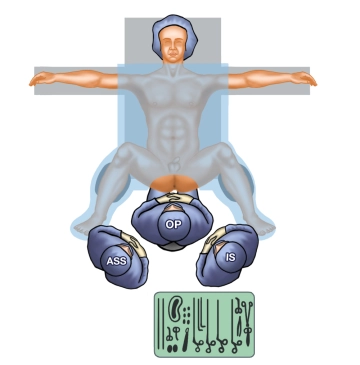- intermediate transsphincteric, non-irritating fistulas
- suprasphincteric, non-irritating fistulas
- high transsphincteric, non-irritating fistulas
-
Indications
-
Contraindications
- acute inflammation
- abscess
Note: Chronic inflammatory bowel diseases do not constitute a contraindication for this surgical method.
-
Preoperative Diagnostics
- The necessary diagnostics are already performed in advance during the therapy of the acute inflammation. Typically, a drainage silicone thread is initially placed.
- In cases of unclear fistula course or persistent fistula or abscess cavities, an endosonography or an MRI examination may be necessary.
-
Special Preparation
Recommendation: Bowel lavage (not evidence-based)
-
Informed consent
General:
- Bleeding
- Thrombosis
- Embolism, etc.
Specific:
- Consecutive incontinence
- Sensory deficit with incontinence complaints or stenoses
- Stenoses due to scar formation
- Secondary wound healing
- Abscess
- Fistula persistence and recurrence in 30-40%
-
Anesthesia
Depending on the general condition of the patient:
- Intubation anesthesia (Intubation anesthesia, Laryngeal mask anesthesia)
- Regional anesthesia (Spinal anesthesia, Caudal anesthesia)
-
Positioning
![Positioning]()
- Lithotomy position
-
OR Setup
![OR Setup]()
The surgeon sits in front of the patient positioned in lithotomy position, with the first assistant to the left. The scrub nurse stands or sits to the right side of the surgeon.
-
Special Instruments and Retention Systems
- Various probes (for probing the fistula)
- possibly toluidine blue for unclear fistula course
-
Postoperative Treatment
postoperative analgesia: Non-steroidal anti-inflammatory drugs are generally sufficient; if necessary, an increase with opioid-containing analgesics can be made.
Follow the link to PROSPECT (Procedures Specific Postoperative Pain Management).
Follow the link to the current guideline Treatment of acute perioperative and post-traumatic pain.medical aftercare: Gently place a compress or tamponade at the end of the operation in the external wound, which is removed on the first postoperative day. Pay special attention to rinsing or sitz baths after bowel movements to keep the wound area reasonably clean.
thrombosis prophylaxis: In the absence of contraindications, due to the moderate thromboembolic risk (surgical procedure > 30min duration), in addition to physical measures, low molecular weight heparin should be administered in a prophylactic, possibly weight- or disposition-risk-adapted dosage until full mobilization is achieved.
Note: Kidney function, HIT II (history, platelet control)
Follow the link to the current guideline Prophylaxis of venous thromboembolism (VTE).mobilization: Immediate
physical therapy: Not necessary
dietary progression: Parenteral or Astro diet or normal diet (not evidence-based)
bowel regulation: Keep stool soft to avoid unnecessary straining. Best achieved by regular administration of sufficient fiber (e.g., psyllium husks). Use 20ml Lactulose sparingly, possibly Movicol, as this can often lead to unplanned mushy stool or diarrhea.
incapacity for work: Hospital stay: 5 days, incapacity for work: 4-6 weeks


